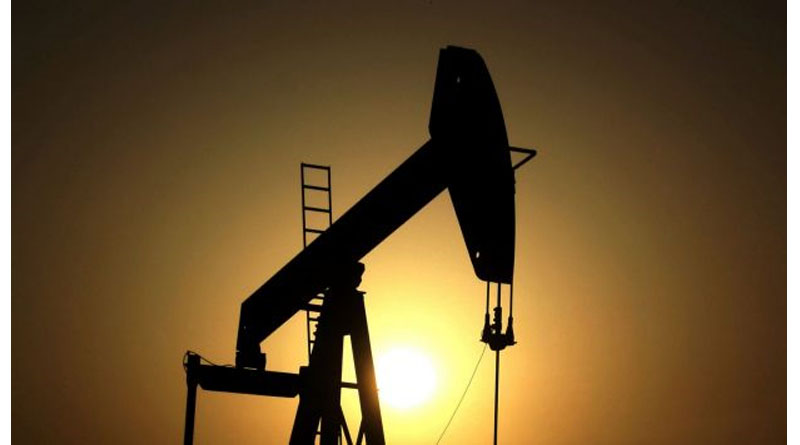Oil Falls to Three-Month Low on Iran Output Boost, Dollar Surge

Image Caption: Oil falls to three-month low on Iran output boost, dollar surge Photo: AP
Mark Shenk and Grant Smith
Oil sank to a three-month low as Iranian output rose and US explorers operated more rigs, signaling the persistence of a global supply glut.
Futures fell to the lowest since August 11 in both New York and London. Iran raised production at three fields faster than expected, while Saudi Arabia said the Organisation of Petroleum Exporting Countries must agree to trim output to stabilise markets. US drillers have added more than 130 rigs since May, according to Baker Hughes. Prices also dropped as the dollar rose to the highest level since February against its peers, making dollar-denominated commodities less appealing to investors.
Oil in London has retreated from more than $US52 a barrel over the past 3 1/2 weeks amid skepticism about OPEC’s ability to implement a deal at its Nov. 30 meeting in Vienna. The group needs to allocate production cuts to achieve a ceiling of 32.5 million to 33 million barrels a day. Failure may cause prices to slip further amid “relentless global supply growth,” the International Energy Agency said Nov. 10.
“The weak fundamental picture is the focus of the market right now,” said Gene McGillian, manager of market research for Tradition Energy in Stamford, Connecticut. “The Iranian headline about boosting production to 250,000 barrels a day at the western field is just the latest sign that supply is growing. Uncertainty about OPEC’s ability to make a cut has wiped out all of last month’s rally.”
West Texas Intermediate crude for December delivery dropped $US1.06, or 2.4 per cent, to $US42.35 a barrel at 11:35 a.m. on the New York Mercantile Exchange. The contract declined 2.8 per cent to $US43.41 on Friday, the lowest close since September 19.
Dollar Rally
Brent for January settlement fell $US1.02, or 2.3 per cent, to $US43.73 a barrel on the London-based ICE Futures Europe exchange. Prices slid 2.4 per cent to $US44.75 on Friday, the lowest close since Aug. 10. The global benchmark traded at a 60-cent premium to WTI for January delivery.
The dollar surged to the highest since February on bets that Donald Trump’s administration will ramp up spending, boosting economic growth and inflation and pushing the Federal Reserve to raise interest rates. The Bloomberg Dollar Spot Index, a gauge of the greenback against 10 major peers, rose as much as 1 per cent.
“The commodity markets don’t appear to be overly focused on Trump,” said Mike Wittner, head of oil-market research at Societe Generale SA in New York. “The stronger dollar is the one way that the election is having an impact.”
Iran has expanded output at three western fields to 250,000 barrels a day, from 65,000 in 2013, the Oil Ministry’s news service Shana reported. The nation told OPEC that it raised total production last month by 210,000 barrels a day to 3.92 million, the biggest increase since sanctions were lifted in January.
Continuing Talks
Saudi Arabia’s Energy Minister Khalid Al-Falih met Nov. 12 with his Algerian counterpart Noureddine Boutarfa and both are optimistic a deal to cut output will be put into effect, the Algerian Energy Ministry said on an official Facebook page. The two ministers discussed mechanisms to implement the proposed OPEC accord, according to the Saudi Press Agency.
“While there may well still be an OPEC deal outcome in Vienna this month, it is expected to fall short of what is required to really kick-start the rebalancing process,” said Harry Tchilinguirian, head of commodity markets strategy at BNP Paribas SA in London.
Oil-market news:
- Failure by OPEC to implement a deal could drag down crude to as low as $US35 a barrel, while success at the group’s gathering in Vienna may push oil to $US60, according to PIRA Energy Group Executive Chairman Gary Ross.
- China’s crude output slipped to the lowest in more than seven years, dropping 2.7 per cent last month to about 3.795 million barrels a day, as oil’s sustained slump discouraged the restart of old wells.
- Global oil inventories are expanding at a slower pace as the market rebalances, according to Sanford C. Bernstein & Co.
(Source: WAToday.com.au)


